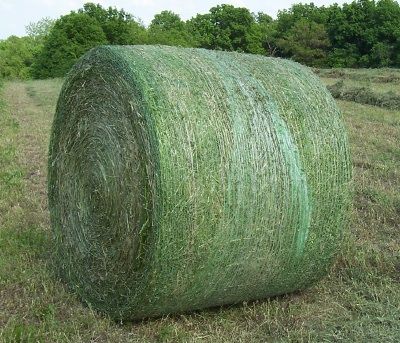Making the Most of Your Hay
Posted: June 22, 2017 | Written By: Simon Kern, M.S., Form-A-Feed Business Manager
With early season drought conditions spreading from the eastern half of Montana, across the Dakotas, and into northwest Minnesota, finding high quality pasture and range land has been a challenge. With limited grazing resources, many cattle producers have been forced to turn to hay or other harvested forage much earlier in the season than usual. With hay prices expected to climb due to the increased demand, it is more important than ever to get the most out of hay through minimizing harvest, storage, and feeding losses.
The time from cutting to baling is the number one factor which will influence harvest loss. Rapid drying is the key to minimize losses and maintain nutritive value. Mother nature has a mind of her own when it comes to providing ideal conditions for drying, but every effort should be made to select a cutting date which offers the lowest chance of precipitation or one which offers only a chance for precipitation closer to the cutting time (less dry matter loss if rain falls on wetter hay materials than dry). Mechanical conditioning can also be used to hasten the drying process by exposing more plant surface to moisture losses. If necessary, hay can also be baled at a higher moisture content than normal (18-22%) and treated with a preservative such as Crop Cure®.
With the cost of harvesting and packaging already invested, it is essential to properly store hay to maximize its value. According to a study conducted at the University of Tennessee, storage losses can range from as little as 5% when stored in a hay barn to as much as 30% when stored uncovered. Storage losses when bales are stacked on pallets and tarped falls intermediate at 14%. Taking these additional measures to preserve your crop will certainly add cost, but the return is that much greater with higher hay costs. It will also allow for more effective stockpiling to ensure supply when drought conditions arise.
All your good work can be undone if your hay ends up as glorified bedding due to feeding losses. Feeding hay in small amounts (daily rather than weekly), using a hay feeder rather than feeding on the ground, and locating your feeding area in a well-drained area are all methods to reduce feeding loss. It is also best to first feed hay stored outside before hay stored inside. The longer hay is stored outside, the more prone it is to spoilage and cattle are much more likely to waste and refuse poor quality hay.
Using even the best management practices from cutting to feeding, you can still expect dry matter losses in the range of 15-20%, but these losses can easily run over 50% if corners are cut. Preserving and maximizing your feed resources is crucial for the financial wellbeing of your operation. Please contact your Form-A-Feed representative to discuss a comprehensive forage management program for your operation.
